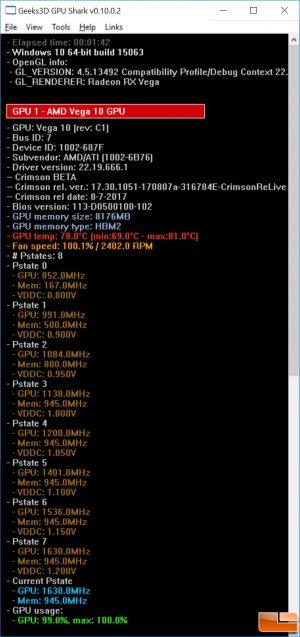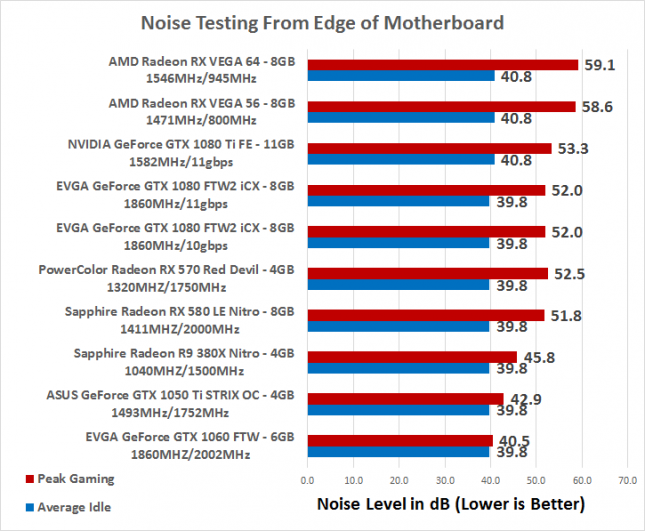AMD Radeon RX Vega Benchmark Review: Vega 64 and Vega 56 Tested
Temperature & Noise Testing
The gaming performance on a graphics card is the most important factor in buying a card, but you also need to be concerned about the noise, temperature and power consumption numbers. Since GPU-Z doesn’t yet read the temperatures of VEGA we didn’t have a way to record or log or temperatures. Using AMD Radeon Settings isn’t good for idle temperatures as it uses the GPU, so we ended up using GPU Shark to get some readings. The VEGA 64 had an idle temperature of 44C and topped out at 81C while gaming. The VEGA 56 had an idle temperature of 38C and topped out at 75C when gaming.
AMD Radeon RX VEGA 64 Temperatures
Sound Testing
We test noise levels with an Extech sound level meter that has 1.5dB accuracy that meets Type 2 standards. This meter ranges from 35dB to 90dB on the low measurement range, which is perfect for us as our test room usually averages around 36dB. We measure the sound level two inches above the corner of the motherboard with ‘A’ frequency weighting. The microphone wind cover is used to make sure no wind is blowing across the microphone, which would seriously throw off the data.
When it comes to noise levels the AMD Radeon RX VEGA 56 and Radeon RX VEGA 64 are by no means silent cards and were louder when gaming than any other graphics card that we have recently test by a good deal. We also heard choke whine on both cards when we were on the game menus in several game titles when the FPS was super high, which is something pretty rare these days.


